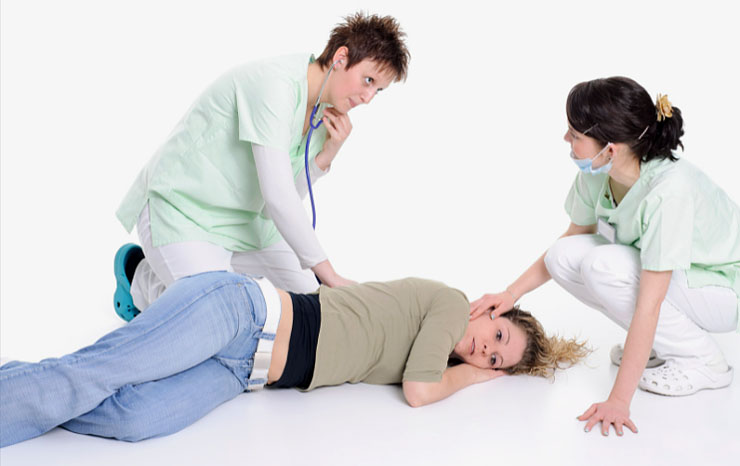
Diabetes is one of the most common diseases in the elderly. If a person with diabetes experiences a significant sharp drop in blood sugar level (e.g. as a result of skipping a meal or a high physical effort), it can cause a diabetic coma.
The symptoms of diabetic coma include excessive sweating, weakness, shortness of breath and muscle tremor.
In such a situation:
![]() If the elderly person is conscious, put two sugar cubes under their tongue or give them sweetened water
If the elderly person is conscious, put two sugar cubes under their tongue or give them sweetened water
![]() If the elderly person is unconscious, place them in a safe position and cover them with a blanket or a jacket so that they do not get cold
If the elderly person is unconscious, place them in a safe position and cover them with a blanket or a jacket so that they do not get cold
![]() In both of the situations, it is necessary to call an ambulance.
In both of the situations, it is necessary to call an ambulance.
Recovery position
If a person is unconscious but breathing, and has no other life-threatening symptoms, place him or her in a recovery position.
Placing someone in a safe position will ensure the patency of the respiratory tract. It also ensures that vomiting or liquid does not cause choking.

Source: MIS Foundation
To put a person in a recovery position, follow these steps:
![]() With the person lying on their back, kneel on the floor by their side
With the person lying on their back, kneel on the floor by their side
![]() Stretch their arm closest to you at the right angle to the body, with the palm up
Stretch their arm closest to you at the right angle to the body, with the palm up
![]() Hold the other arm and bend it so that the back of the hand rests on the closer cheek, and hold it in that place
Hold the other arm and bend it so that the back of the hand rests on the closer cheek, and hold it in that place
![]() Use your free hand to bend the further knee of the person at a right angle
Use your free hand to bend the further knee of the person at a right angle
![]() Carefully roll the person to the side by pulling the bent knee
Carefully roll the person to the side by pulling the bent knee
![]() Their bent arm should support the head and the stretched arm will stop you from rolling the person too far
Their bent arm should support the head and the stretched arm will stop you from rolling the person too far
![]() Make sure the bent leg is at a right angle
Make sure the bent leg is at a right angle
![]() Open the airways by gently tilting the person’s head back and lifting their chin
Open the airways by gently tilting the person’s head back and lifting their chin
![]() Make sure that nothing is blocking the airways
Make sure that nothing is blocking the airways
Back to Introduction Next
![]()
First Aid for the Elderly in Emergency:11% complete
